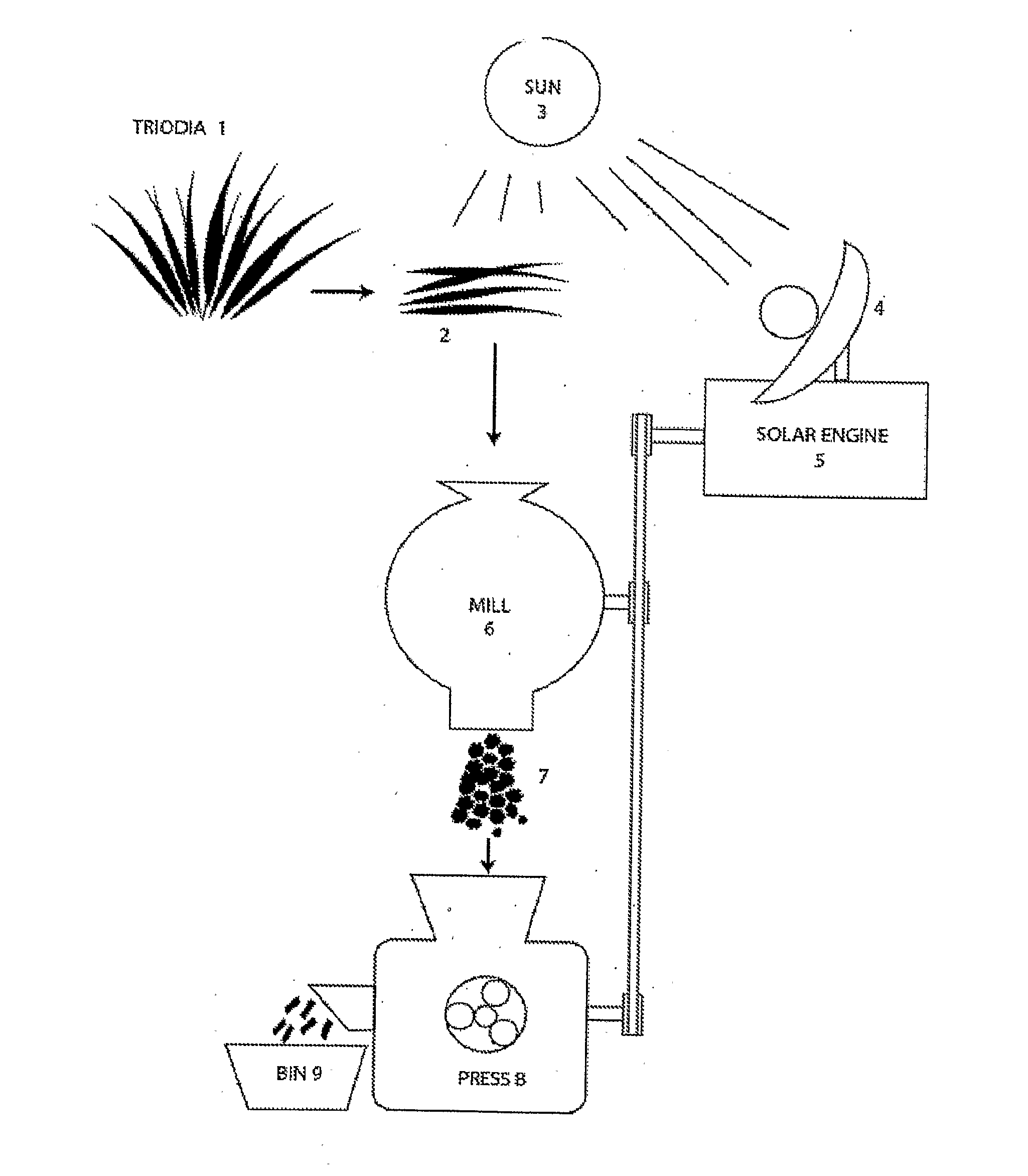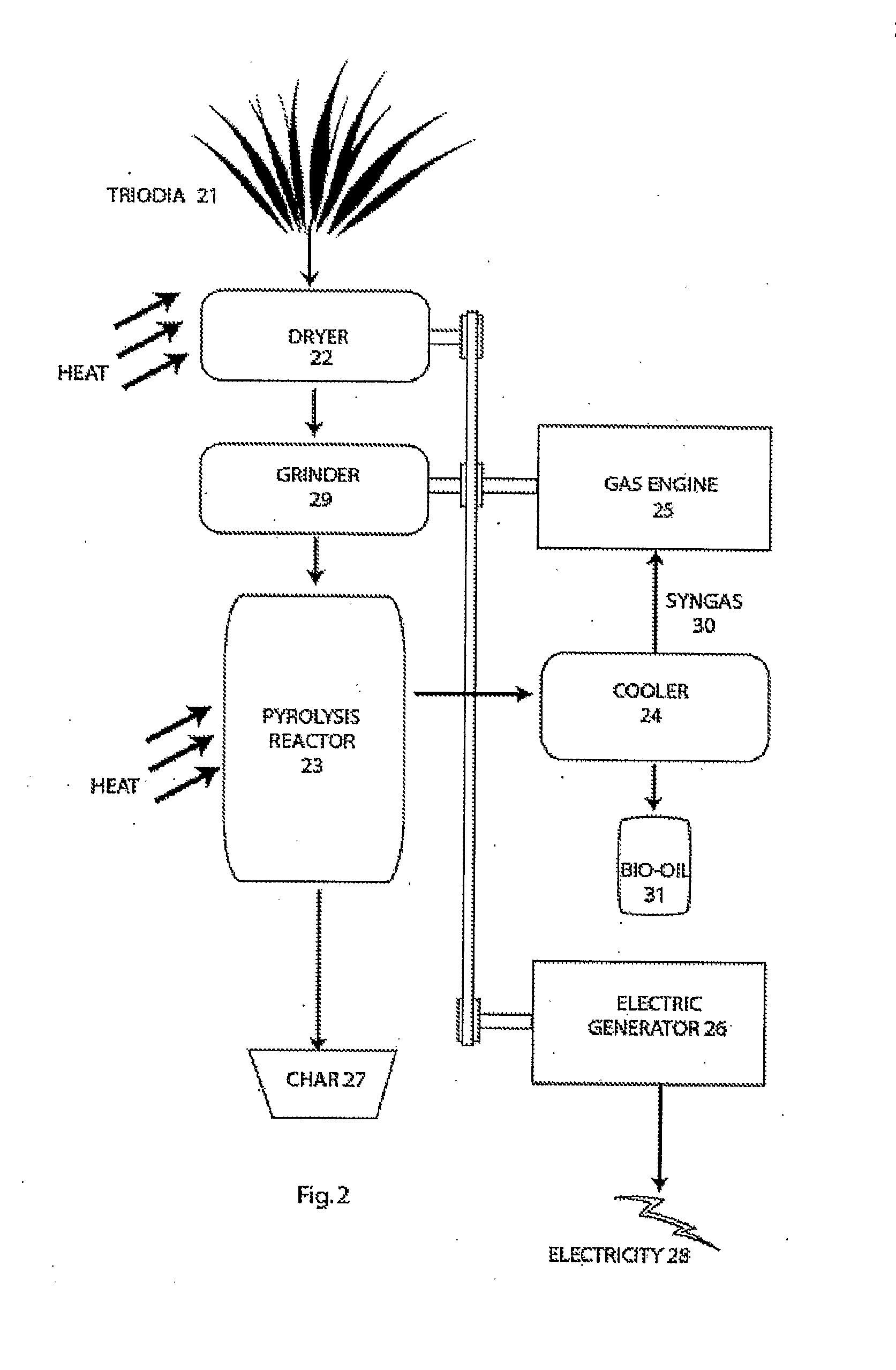Methods and products using grass of the genus triodia
- Summary
- Abstract
- Description
- Claims
- Application Information
AI Technical Summary
Benefits of technology
Problems solved by technology
Method used
Image
Examples
Embodiment Construction
[0041]Embodiments of the invention will now be described with reference to the drawings in which:
[0042]FIG. 1 is a block diagram of an embodiment of the present invention in which Triodia is converted into fuel pellets;
[0043]FIG. 2 is a block diagram of an embodiment of the present invention in which Triodia is used to generate electricity and bio-oil;
[0044]FIG. 3 is a block diagram of an embodiment of the present invention in which Triodia is used to generate electricity, ethanol and lignin briquettes; and
[0045]FIG. 4 is a block diagram of an embodiment of the present invention in which Triodia is used to create bio-char.
[0046]Referring now to FIG. 1, Triodia plants (1) are first harvested and dried (2). In this embodiment solar energy is used for drying, to maximise the carbon footprint of the process, although any other method can be used with good results. Moisture content is typically reduced to 10%-15%.
[0047]Solar energy is also collected by collector (4) which is used to powe...
PUM
 Login to View More
Login to View More Abstract
Description
Claims
Application Information
 Login to View More
Login to View More - R&D
- Intellectual Property
- Life Sciences
- Materials
- Tech Scout
- Unparalleled Data Quality
- Higher Quality Content
- 60% Fewer Hallucinations
Browse by: Latest US Patents, China's latest patents, Technical Efficacy Thesaurus, Application Domain, Technology Topic, Popular Technical Reports.
© 2025 PatSnap. All rights reserved.Legal|Privacy policy|Modern Slavery Act Transparency Statement|Sitemap|About US| Contact US: help@patsnap.com



